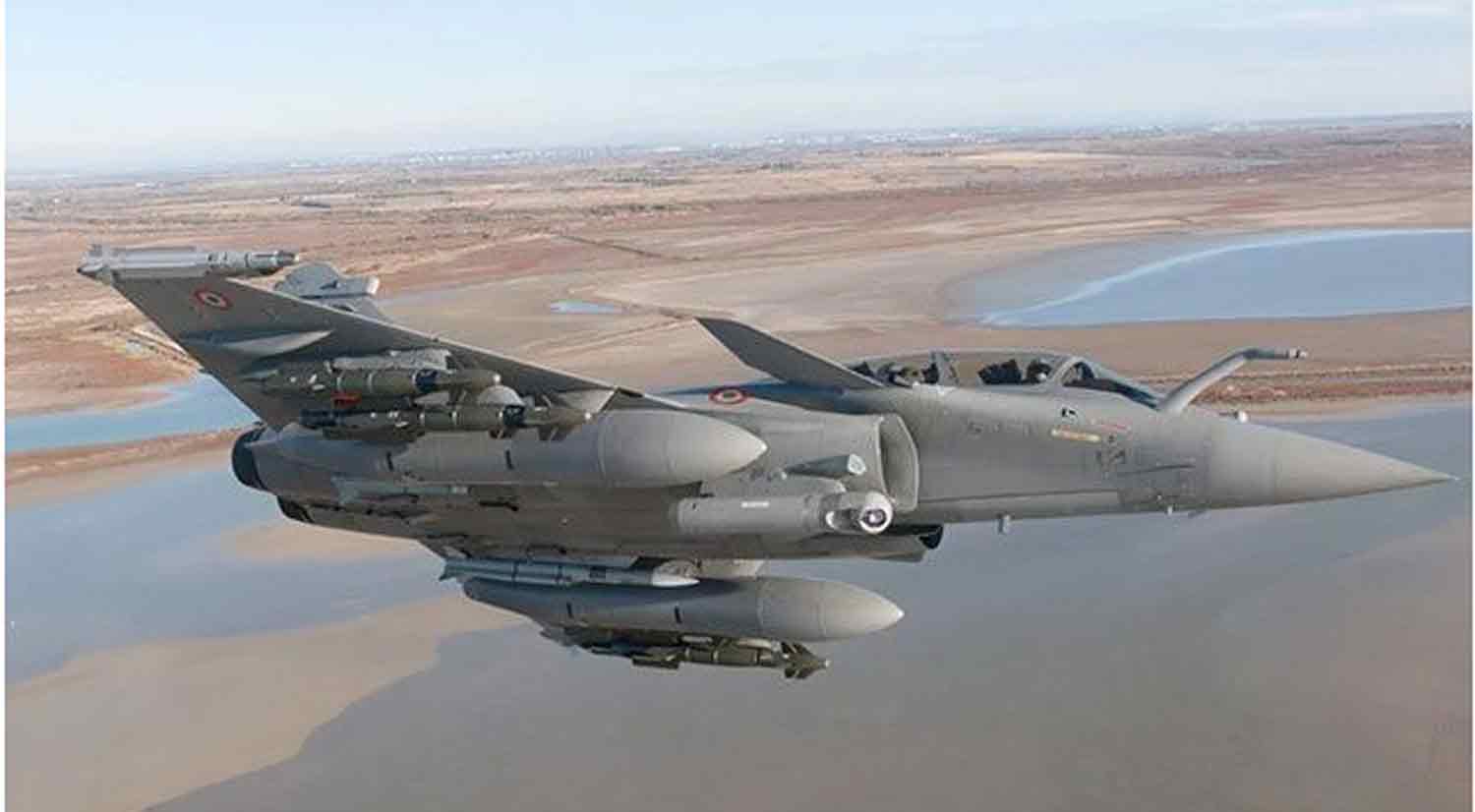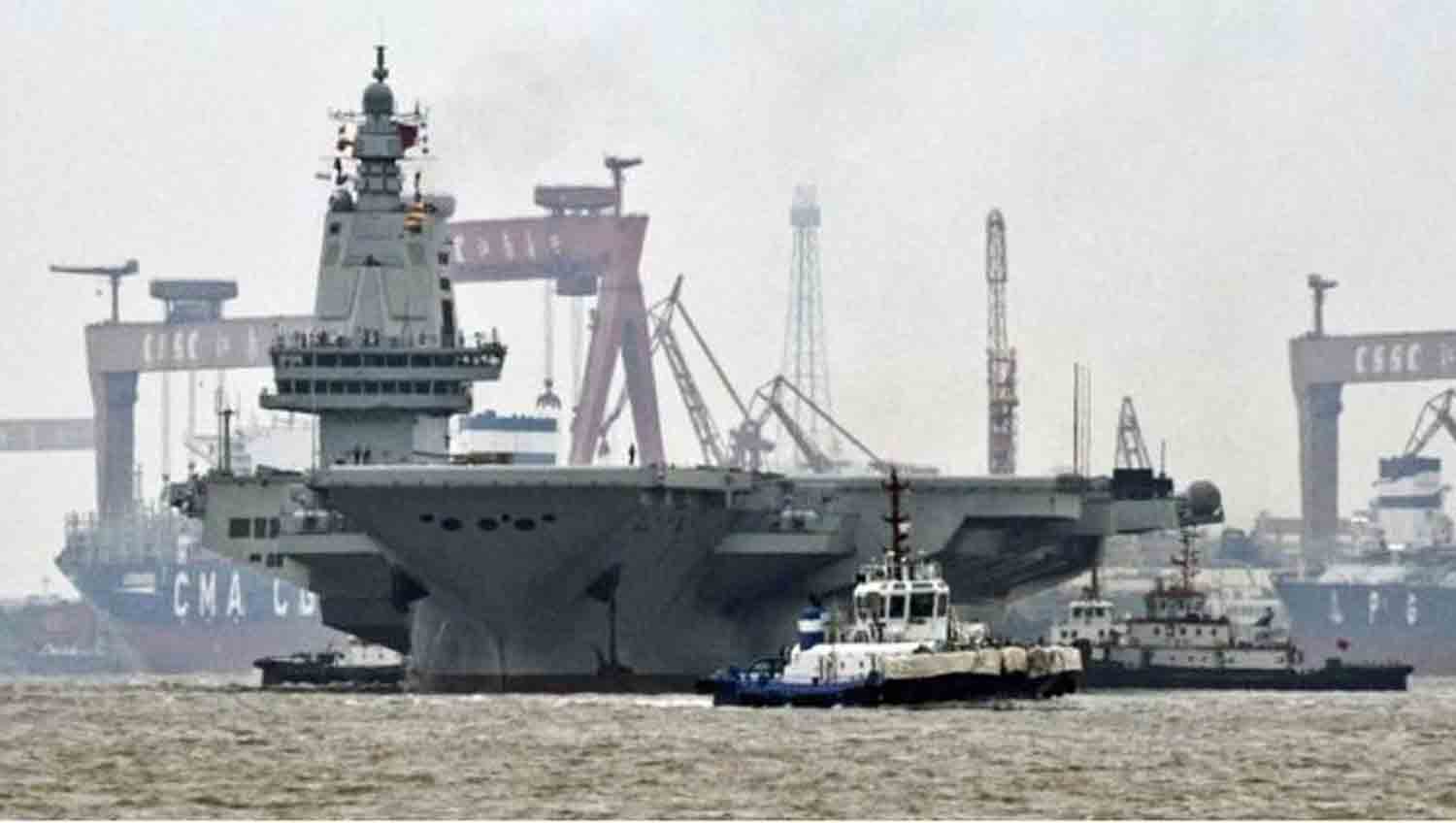As global military tensions escalate, France is increasingly concerned about the preparedness of its Air and Space Force for a potential large-scale conflict. Although the country possesses one of the most powerful military arsenals in Europe, featuring nuclear capabilities, advanced submarines, and state-of-the-art fighter jets, the reality is that the French military’s readiness, particularly in aerial operations, may not be as robust as expected.
A recent evaluation by specialists at the French Institute for International Relations (IFRI) presents a concerning assessment of the nation’s air capabilities. The report, authored by former French military personnel, highlights a critical shortcoming in France’s fighter jet inventory: the lack of a fifth-generation aircraft. While the Rafale, France’s flagship multi-role fighter, has long been a source of national pride, its limitations are becoming increasingly evident.
The Rafale is recognized as a competent 4th-generation fighter, but it was not designed with stealth in mind. In the early 2000s, France opted to develop a versatile aircraft capable of fulfilling multiple roles rather than focusing on a stealth-oriented design.
This choice was made even as the United States advanced its fifth-generation fighters, such as the F-22 and subsequently the F-35. Although the Rafale has undergone enhancements over the years, incorporating some hybrid features that bring it closer to a 4.5-generation classification, it still lacks the sophisticated low-observable technologies that are vital for contemporary air warfare.
Stealth capabilities, which enable aircraft to evade radar detection, are essential for breaching enemy air defenses and targeting high-value assets. The absence of a genuinely stealthy fighter places French pilots at a considerable disadvantage when facing advanced anti-access/area-denial (A2/AD) systems.
Adversaries such as Russia and China are increasingly deploying systems aimed at denying access to contested airspace for enemy aircraft. In the absence of stealth capabilities, the Rafale fighter jet would be at risk of being intercepted by sophisticated surface-to-air missiles and enemy aircraft.
Although the Rafale is effective in various operational contexts, the disparity between France’s air power and that of its potential rivals is widening. The swift progress in military technologies from China and Russia, including drones, hypersonic missiles, and electronic warfare systems, exacerbates this challenge.
These advancements have altered the aerial power dynamics, raising doubts about Western air superiority for the first time since World War II. France, in particular, is experiencing pressure as its Rafale fleet, despite its strengths, lacks the technological advantages that contemporary warfare necessitates.
In addition to stealth deficiencies, the French Air Force faces a significant limitation in its inventory of precision-guided munitions. In the event of a large-scale conflict, sustaining operations beyond a few days would be difficult, particularly without adequate supplies of advanced missiles such as the Meteor air-to-air missile.
These munitions are crucial for effective long-range engagements, yet France’s stockpile is alarmingly low. The situation has been further aggravated by ongoing military support for Ukraine, which has led to a depletion of essential missiles like the SCALP cruise missile and Aster 30 surface-to-air missile.
The lack of precision-guided weapons is further intensified by France’s choice to forgo cluster munitions. While this decision aligns with global disarmament initiatives, it leaves the French military without a viable option for targeting extensive areas of enemy territory.
France is compelled to depend on a limited number of costly systems that can only effectively target smaller areas. This dependence on advanced munitions, coupled with an inadequate stockpile, may severely hinder France’s capacity to carry out prolonged air operations during a significant conflict.
The absence of a fifth-generation fighter, a lack of sufficient precision-guided munitions, and the diminishing Western air superiority create a challenging situation for France. The nation stands at a pivotal moment, needing to choose between modernizing its air forces to address emerging threats or risking obsolescence against its rivals.
One potential avenue for improvement is the acquisition of a fifth-generation fighter, either by purchasing established platforms like the F-35 or by hastening European initiatives to create a next-generation aircraft through the FCAS [Future Combat Air System] program. However, the FCAS initiative is still in its early stages, with operational aircraft not anticipated until the 2040s.
As France contemplates its future military strategy, the pressing question is whether it will take decisive action to close the widening gaps in its air capabilities or continue to depend on outdated systems that fail to meet the requirements of contemporary warfare. The urgency is clear: in a world marked by increasing volatility, France cannot afford to delay.
Nevertheless, despite the concerning assessment of the French Air Force, it is important to examine the flagship of its combat aviation, the Dassault Rafale. The Rafale represents the pinnacle of modern French military aviation, serving as a versatile multi-role fighter that has been integral to France’s defense strategy for nearly twenty years.
Since its debut in the early 2000s, the Rafale has established itself as a powerful asset, adept at performing a diverse array of missions, including air superiority, precision strikes, and nuclear deterrence. The journey of its development faced numerous obstacles, and the aircraft’s progression highlights the ingenuity and resilience inherent in French military engineering.
The Rafale family includes two main variants: the Rafale C, designed for single-pilot operation, and the Rafale M, intended for naval use. Additionally, the Rafale B, a two-seat version, is available for training and operational support. This aircraft is celebrated for its adaptability, capable of fulfilling various roles based on mission demands.
Whether engaged in air-to-air combat, deep strike operations, close air support, or reconnaissance missions, the Rafale can swiftly adjust to meet the requirements with minimal modifications. This adaptability is enhanced by a sophisticated suite of sensors, avionics, and armaments, providing the Rafale with a significant advantage in combat scenarios.
Central to the Rafale’s capabilities is its advanced radar and sensor suite, which enables effective operation in highly contested environments. The Thales RBE2-AA radar stands out as one of the most sophisticated radar systems developed for fighter jets, allowing the Rafale to track multiple targets over extended distances. Furthermore, its integrated electronic warfare systems equip the aircraft to neutralize threats from enemy radar and missile systems.
The Rafale’s adaptability is significantly bolstered by its ability to integrate a diverse array of weaponry, establishing it as a genuinely multi-role aircraft. It can execute a variety of strikes with remarkable precision, utilizing air-to-air missiles such as the MBDA MICA and Meteor, as well as precision-guided munitions and cruise missiles.
What truly distinguishes the Rafale is its proficiency in conducting high-risk missions while maintaining a low risk profile. The aircraft’s design incorporates features that improve its survivability in hostile environments, including exceptional maneuverability and stealth characteristics, although it does not achieve a fully stealth configuration.
With a reduced radar signature and the capability to operate at both high and low altitudes, the Rafale presents a formidable challenge in both offensive and defensive scenarios. Nonetheless, as noted in previous analyses, the absence of complete stealth capabilities poses certain difficulties when confronting contemporary anti-access/area-denial systems.
A distinctive feature of the Rafale is its suitability for carrier operations. The Rafale M, tailored for deployment on France’s aircraft carriers, is outfitted with reinforced landing gear and a tailhook for arrested landings, enabling effective operation from the Charles de Gaulle’s flight deck.
This naval variant maintains all the functionalities of its land-based siblings, with enhancements that equip it to endure the rigors of maritime operations. Its ability to transition seamlessly between land and sea missions provides France with a considerable strategic edge, facilitating global power projection from its carriers.
Although it originated in the early 21st century, the Rafale continues to advance through improvements in avionics, weaponry, and operational capabilities. Ongoing upgrades have ensured that the Rafale remains at the cutting edge of modern aerial warfare, featuring enhancements to its radar systems, weapon integration, and cockpit interfaces.
The implementation of the F3-R standard, which integrates advanced weaponry and electronic warfare systems, has significantly enhanced the Rafale’s reputation as one of the premier fighter jets globally. Additionally, the Rafale plays a vital role in France’s nuclear deterrence strategy, possessing the capability to transport and deploy nuclear armaments, thereby ensuring its importance in high-stakes geopolitical situations.
Nevertheless, as technological advancements accelerate, the Rafale encounters new obstacles. The rise of fifth-generation fighters like the F-35, along with the progression of advanced drone technologies and hypersonic weapons, will undoubtedly impact the Rafale’s function in future military engagements.
While the aircraft continues to be a dominant force in aerial combat, it must evolve to maintain its relevance in an ever-changing warfare environment. As France looks toward the next generation of combat aircraft, the Rafale is expected to remain a vital element of the nation’s defense strategy, but its future effectiveness will hinge on its capacity to incorporate new technologies and stay at the forefront of modern military operations.
The Rafale, in all its variants and with its broad spectrum of capabilities, exemplifies French engineering prowess, versatility, and military strength. Its ability to adapt and operate across various domains makes it a powerful asset for France and its allies; however, like any military system, it must continue to progress to meet the challenges of future conflicts.
Its status as a cornerstone of France’s military aviation is assured, but whether it can sustain its superiority against increasingly advanced opponents is yet to be determined.
Discover more from Defence Talks | Defense News Hub, Military Updates, Security Insights
Subscribe to get the latest posts sent to your email.





